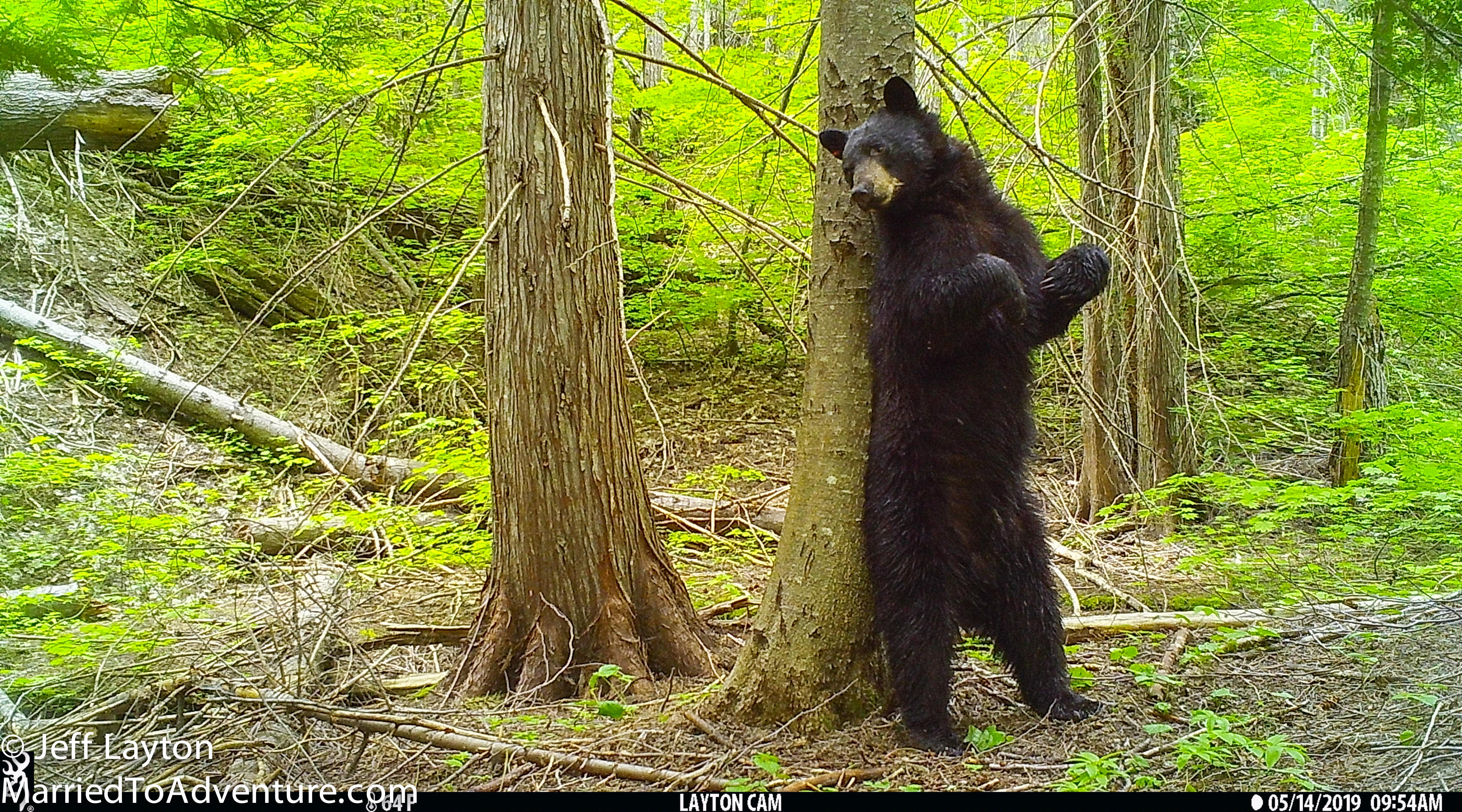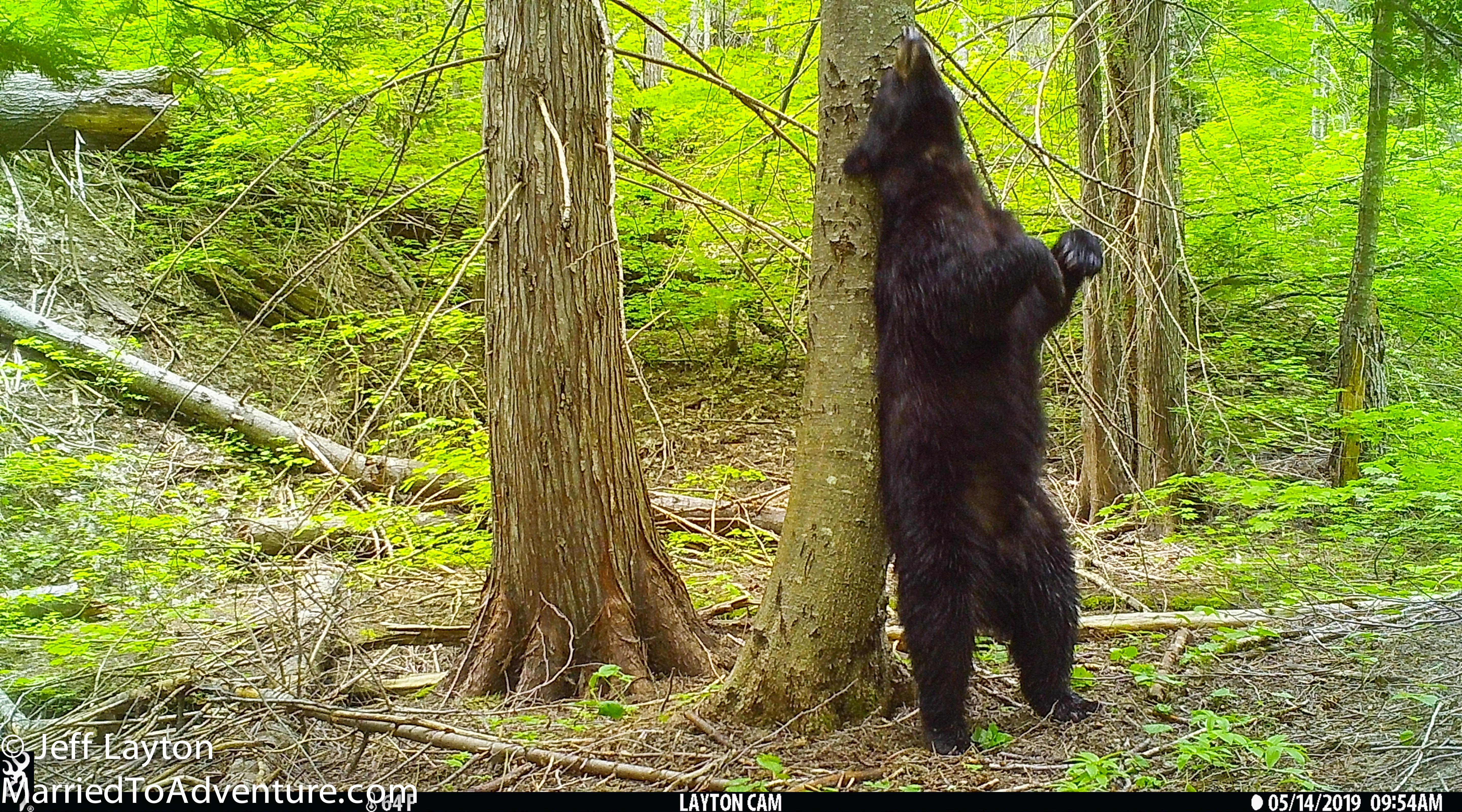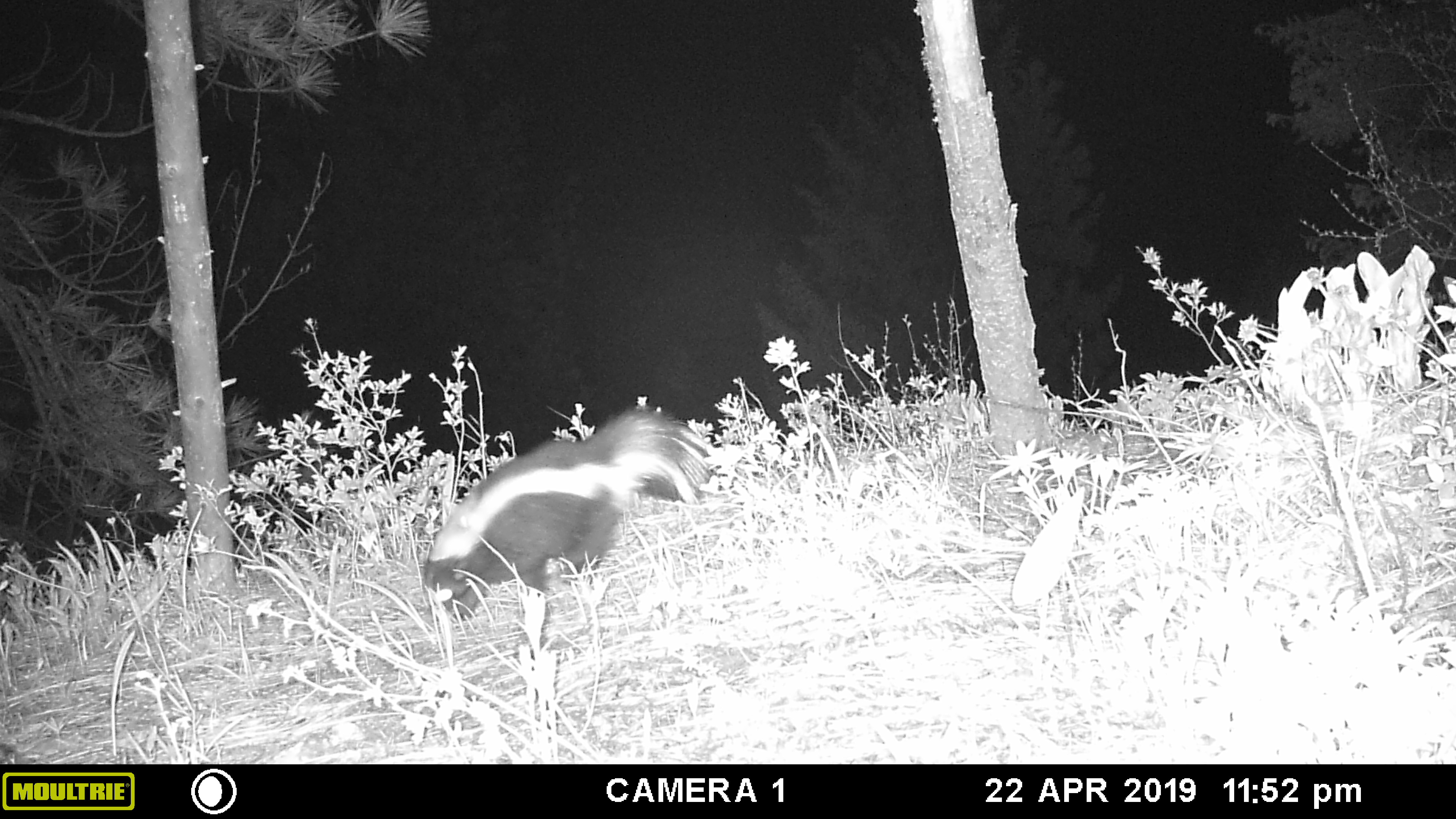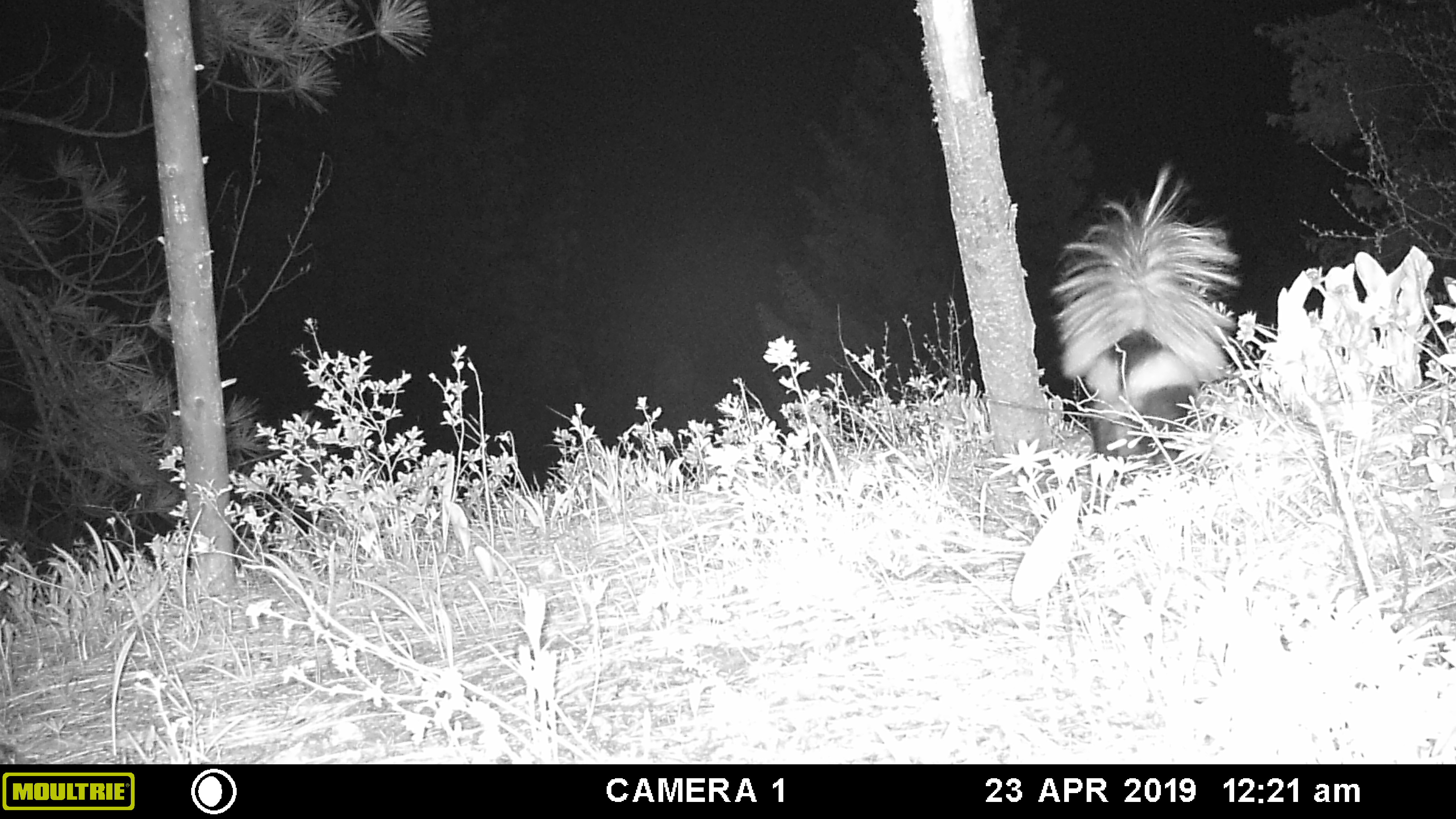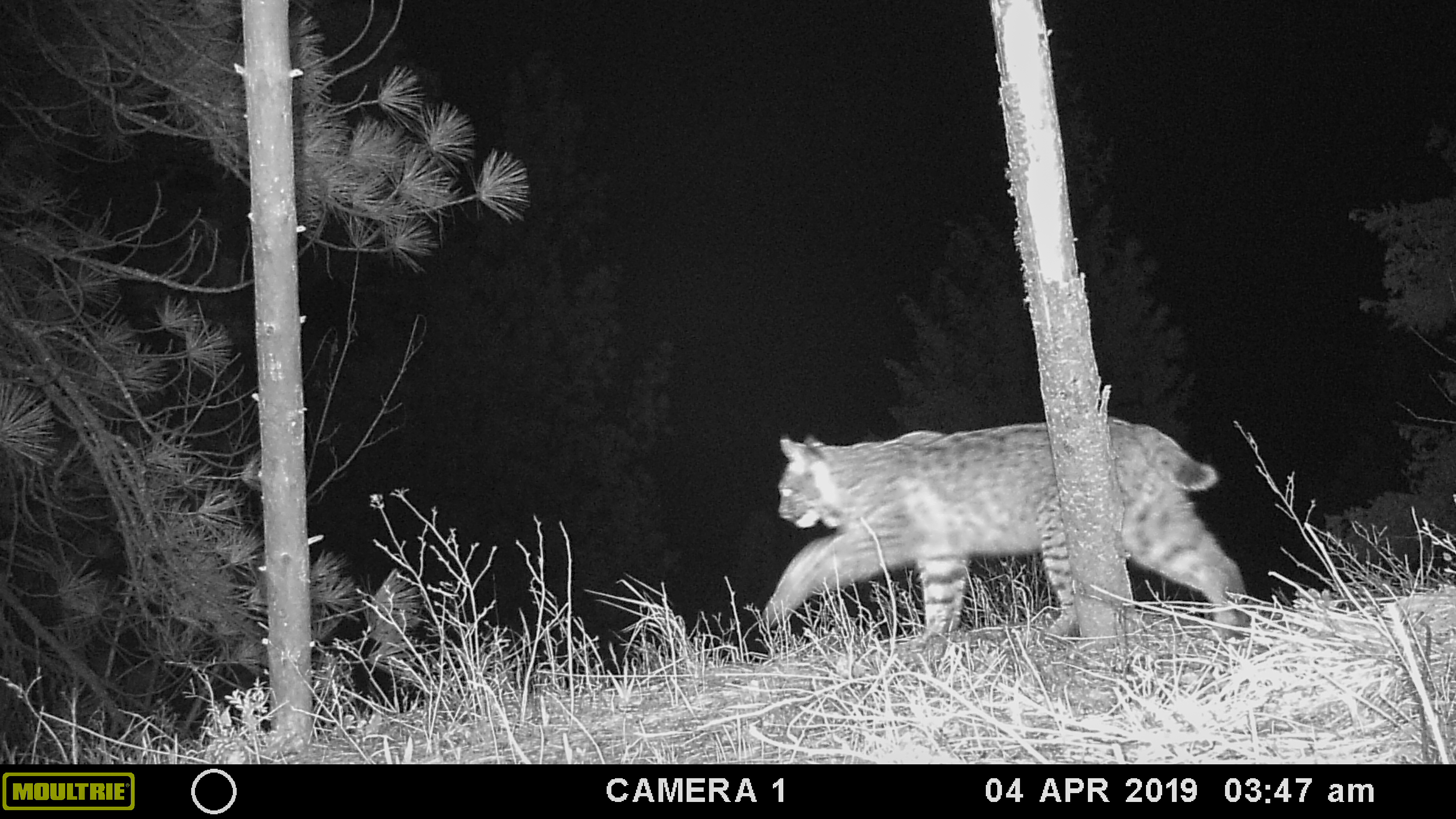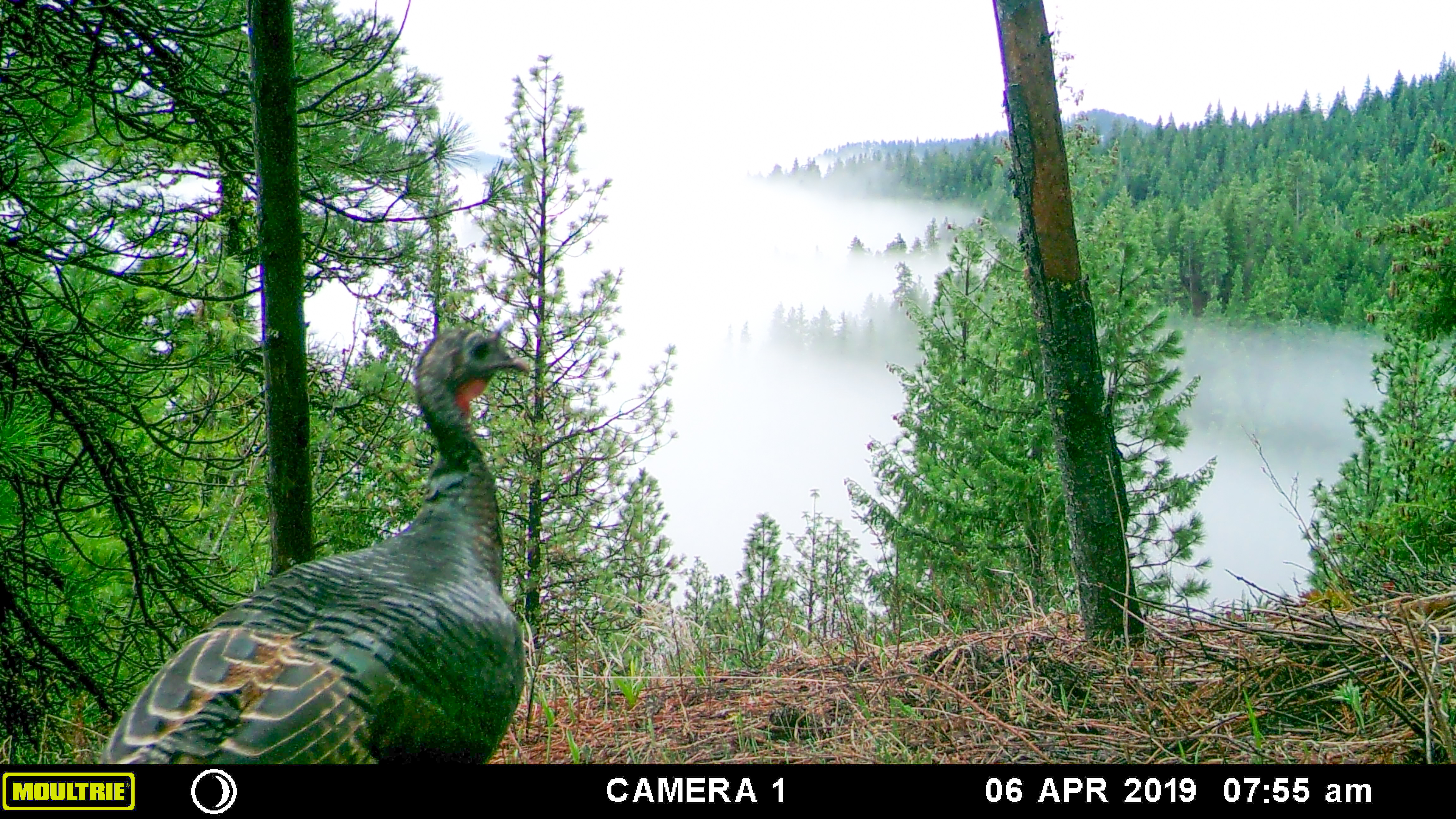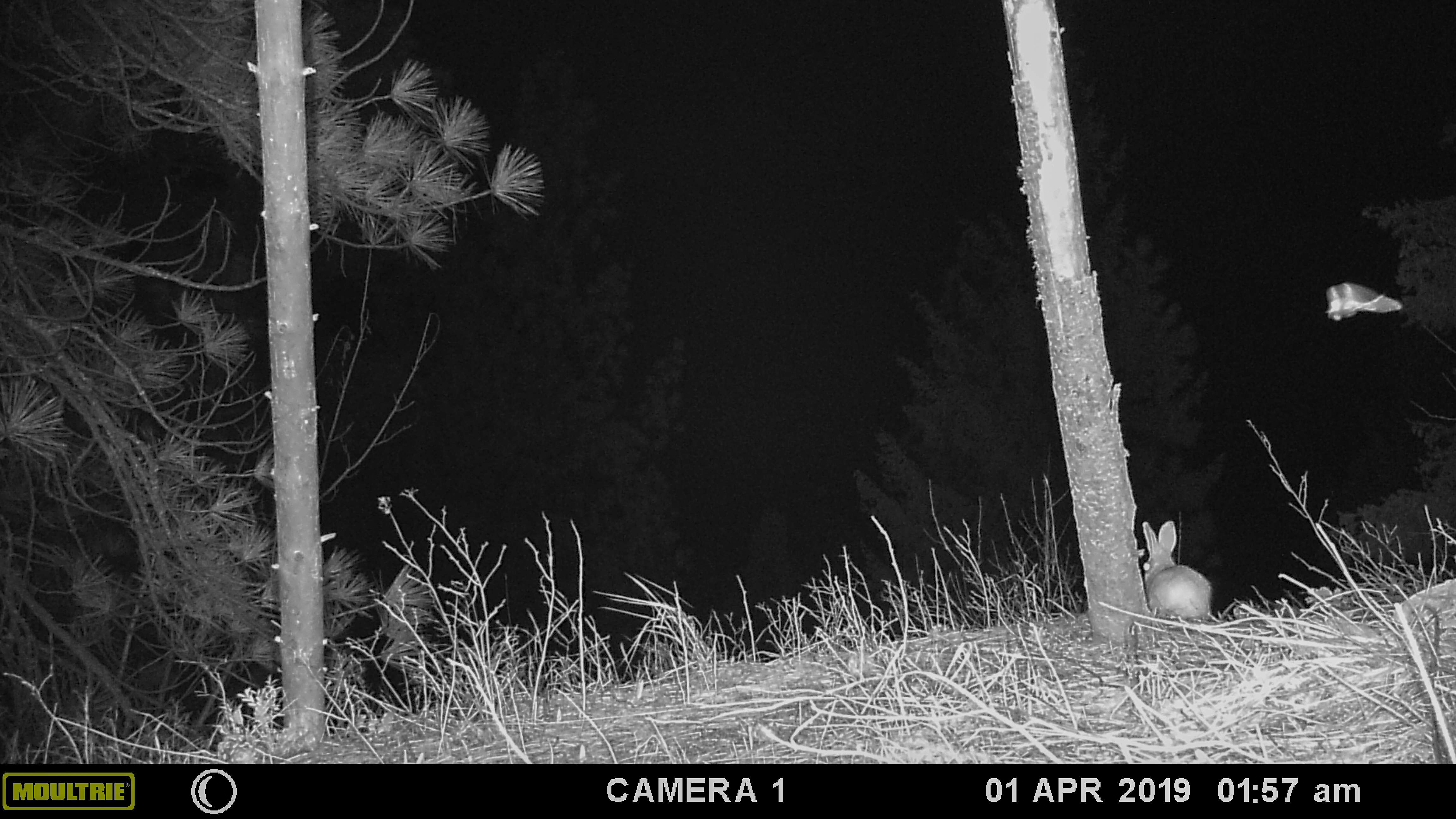A few weeks ago Jeff took a training class to learn more about camera trapping with the non-profit organization Conservation Northwest. One of the big takeaways from the day was to pay more attention to places like trails and markings that animals are already naturally using.
Amanda knew that this scratched up tree was going to be a photographer’s honey hole the second she saw it. With fresh gashes a good SEVEN FEET above the ground and claw-raked rings around the trunk, it was likely a marking post for black bears.
We’d been shooting in this secret little grotto all winter, with some near misses on a few bobcats and a little stuff like snowshoe hare. But the location didn’t get really active until the bears woke up (and the nearby stream became more important for animals).
One of the fun things about this series of shots is to see how the bears act in the wild. The way this black bear marked it’s scent reminds me of a cat.
The Bait Debate
You could set up your cameras and hope for the best but if you’re doing research, you want to increase your odds. Most pro camera trappers and biologists drawn animals closer with the help of scent lures. But it depends a bit on the species (wolves for example don’t like lures – too many bad experiences in their history).
Ideally you apply just enough so that an animal passing nearby would stop to sniff around in your camera’s trigger zone.
In the case of our bears, a few dabs of commercially produced skunky paste encouraged their natural behavior, and we got some really cool photos.
Ethically you don’t want to habituate animals with food rewards, and you don’t want them expending valuable energy on fruitless detours. Bait far away from populated areas so you don’t train the animals to approach people. Food lures should not be used because they can habituate animals to foraging in garbage or eating poisoned bait.
However if you find a carcass or bones in the wild it’s a pretty good place to set up a camera! Better yet, look for natural rubs along popular game trails and encourage their curiosity.
Huge Disclaimer: Beware of traveling with scent lure! Always carry bear spray when you travel. Keep your bait in an old Nalgeen or similar airtight water bottle. Have it easily accessible so you can ditch it in a hurry if you encounter a big carnivore. And don’t handle your camera after you’ve handled bait. Bears are known to destroy cameras when they smell scent lure on them.
It’s been fun to observe what critters become more common as the seasons change. Over the winter it was all bobcats and cougars. In early spring it was skunks and turkeys. Late spring it’s deer and bears. In mid summer things get quiet (as more animals forage in the high country) and in the fall, the activity around Osprey Acres picks up again.
